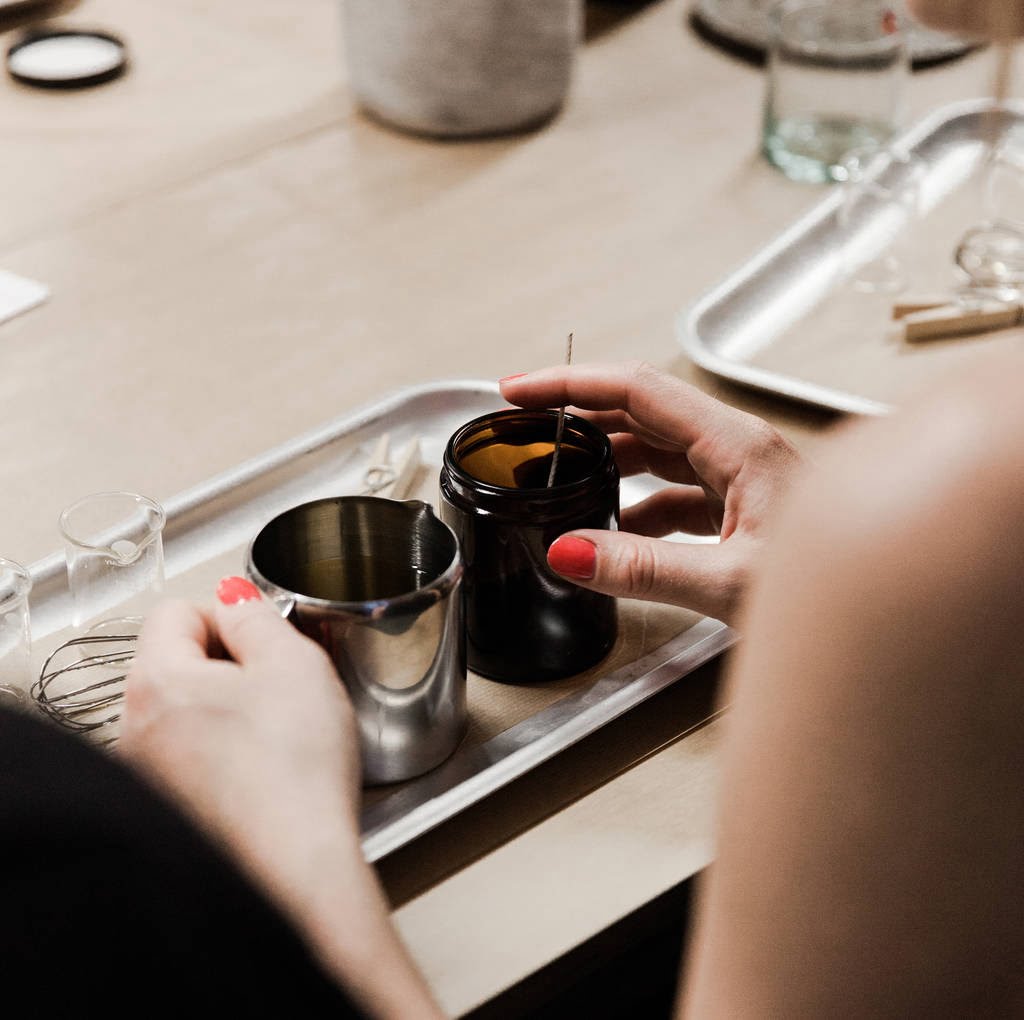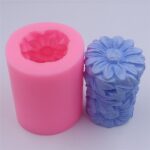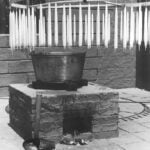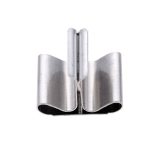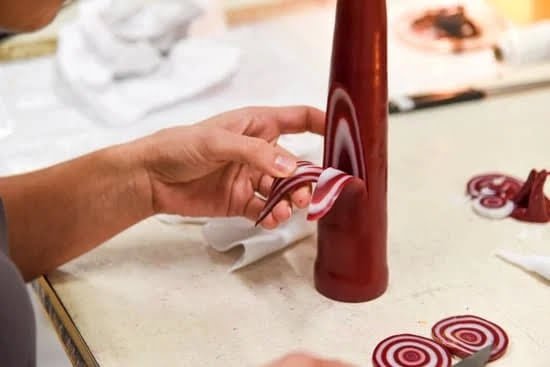When it comes to making candles, one often overlooked but crucial element is the wick. The size of the wick plays a significant role in determining the quality of the candle. So, what size wick do you buy for making candles? In this article, we will delve into the importance of selecting the right wick size and its impact on candle performance and burn quality.
Choosing the correct wick size is essential for producing high-quality candles that burn evenly, create a steady flame, and emit a pleasant scent. An improperly sized wick can result in issues such as tunneling, sooting, or poor burn performance. By understanding the significance of choosing the right wick and considering various factors that influence your choice, you can achieve exceptional results in your candle making endeavors.
In this comprehensive guide, we will explore the basics of candle wicks, including their function and different types available. We will delve into factors to consider when choosing the right wick size, such as candle diameter, wax type, fragrance load, and desired burn time.
Additionally, we will provide a detailed guide on matching wick sizes to candle diameters and offer recommendations based on specific burn times. By mastering the art of selecting the ideal wick for your candles, you can elevate your craft and produce candles that are both aesthetically pleasing and high-performing.
The Basics of Candle Wicks
Candle wicks play a crucial role in the burning process of candles, and understanding their function and types is essential for achieving high-quality candle making results. The primary function of a candle wick is to draw up liquid wax from the container or candle mold and vaporize it through combustion, thus producing a steady flame.
Function of Candle Wicks
The wick’s ability to draw up liquid wax depends on its composition and structure. Most commonly, candle wicks are made from braided cotton with a core material that enhances stability and rigidity. The size and construction of the wick determine how much fuel it can pull up at any given time. A properly sized wick ensures sufficient fuel supply for an even burn without excessive smoking or tunneling.
Types of Candle Wicks
There are various types of candle wicks available, each designed to accommodate different burning characteristics and needs. Cotton wicks are the most popular choice due to their affordability, versatility, and efficient burn performance. However, cotton wicks come in different variations such as flat braid, square braid, cored-wick (with a metal or paper core), or specialty-treated options.
In addition to cotton wicks, other types include wooden wicks (which create a crackling sound reminiscent of a fireplace), hemp wicks (considered more eco-friendly), self-trimming wicks (designed to curl as they burn to prevent soot buildup), and zinc-core or lead-core wicks (although these are less common due to safety concerns).
Understanding the different types of candle wicks allows candle makers to select the best option for their specific needs in terms of burn characteristics, aesthetics, sustainability preferences, and safety considerations. It is important to note that experimentation may be necessary to find the ideal type of wick for each unique combination of factors involved in candle making.
Factors to Consider When Choosing the Right Wick Size
When it comes to choosing the right wick size for your candles, there are several factors that need to be considered. These factors will greatly influence the performance and burn quality of your candles. By taking these factors into account, you can ensure that your candles burn evenly, efficiently, and safely.
- Candle Diameter: One of the most important factors to consider when choosing the right wick size is the diameter of your candle. A wick that is too small for the diameter of your candle will result in a weak flame that struggles to melt the wax pool evenly.
On the other hand, a wick that is too large for the diameter of your candle will create a larger flame and may result in sooting or excessive smoking. - Wax Type: The type of wax you use in your candles will also impact your choice of wick size. Different types of wax have different melting points and densities, which can affect how well they burn with a particular wick size. For example, soy wax generally requires a larger wick size than paraffin wax due to its lower density and slower burn rate.
- Fragrance Load: If you plan on adding fragrance oils or essential oils to your candles, it’s important to take into account the effect this may have on your choice of wick size. Fragrance oils can have an impact on how well a candle burns, as some fragrances can inhibit proper combustion. In general, higher fragrance loads may require a larger wick size to compensate for any potential issues.
- Desired Burn Time: Another factor to consider when choosing the right wick size is how long you want your candle to burn for. A larger wick size will typically result in a faster burn rate and shorter overall burn time, while a smaller wick size may prolong the burn time. Consider whether you’re looking for a quick-burning candle or one that lasts longer when making your wick size selection.
By carefully considering these factors when choosing the right wick size for your candles, you can create candles that burn evenly, have a steady flame, and perform optimally. Experimentation may be necessary to find the perfect combination of wick size, candle diameter, wax type, fragrance load, and desired burn time for your specific candle-making process.
Wick Size Guide
The size of the wick plays a crucial role in the performance and burn quality of candles. Choosing the right wick size is essential to ensure that your candles burn evenly, with a strong flame and minimal soot. In this section, we will provide a detailed guide on selecting the appropriate wick size based on candle diameter.
When determining the right wick size, it is important to consider the diameter of your candles. A wick that is too small for the candle’s diameter may not generate enough heat to melt the wax completely, resulting in tunneling or uneven burning. On the other hand, a wick that is too large may cause excessive melting and dripping of wax and produce a larger flame than desired.
| Candle Diameter (inches) | Recommended Wick Size |
|---|---|
| 1 | Small Wick |
| 2 | Medium Wick |
| 3 | Large Wick |
It is important to note that this table serves as a general guideline and may vary depending on factors such as wax type, fragrance load, and desired burn time. It is always recommended to conduct test burns when using new materials or making changes to your candle recipe.
By matching the right wick size to your candle diameter, you can achieve optimal burn performance and ensure that your candles burn smoothly and evenly from start to finish. So take the time to determine the appropriate wick size for your candles, and you will be rewarded with high-quality, professionally crafted candles.
Understanding Burn Rates
When it comes to candle making, achieving the desired burn time is crucial. Whether you want a shorter burn time for smaller candles or a longer burn time for larger ones, selecting the right wick size plays a vital role in determining the overall performance and duration of your candles.
To understand how different wick sizes influence burn rates, it’s essential to recognize that the size of the wick directly affects the amount of fuel (wax) being consumed by the flame. A larger wick will consume more fuel, resulting in a faster burn rate and shorter candle life. Conversely, a smaller wick will consume less fuel, leading to a slower burn rate and longer-lasting candle.
To select the appropriate wick size for your desired burn time, there are several considerations to keep in mind:
- Candle Diameter: The diameter of your candle strongly correlates with the burn time. Generally, larger diameter candles require larger wicks to ensure proper burning throughout the entire surface area.
- Wax Type: Different types of wax have varying melting points and densities, which can affect how efficiently they are burned. Be aware that certain wax types may require different wick sizes to optimize their burning properties.
- Fragrance Load: If your candles contain fragrance oils or essential oils, keep in mind that these additives can impact the burn rate as well. Higher fragrance loads may necessitate slightly larger wicks to allow for proper scent throw while maintaining optimal burn quality.
To assist you in selecting the correct wick size for your desired burn time, it is helpful to refer to charts or tables specifically designed for this purpose. These resources provide valuable recommendations based on various factors such as candle diameter and wax type.
Remember that finding the perfect balance between candle aesthetics and functionality may require some experimentation and fine-tuning. Don’t be afraid to test different wick sizes before settling on one that achieves your desired burn time while ensuring a clean and even burn.
By understanding the relationship between wick sizes and burn times, you can confidently create candles that meet your specific preferences and requirements. Whether you’re making candles for ambiance, relaxation, or as gifts, mastering the art of selecting the right wick size will result in exceptional candle making results.
Adjusting Wick Sizes for Different Wax Types
When it comes to making candles, one important factor to consider is the type of wax being used. Different types of wax have unique properties that can affect the burning characteristics and performance of a candle. Adjusting the wick size according to the specific wax type is crucial in obtaining optimal results.
One common challenge encountered when using certain waxes is a high melt pool temperature, which can lead to issues like excessive sooting or fast burn rates. To address this, it is necessary to choose a larger wick size that encourages a slower burn and prevents tunneling. This allows the wax to melt evenly and reduces the risk of wastage. Beeswax, for example, tends to burn at higher temperatures compared to other waxes, so it requires a larger wick size.
On the other hand, softer waxes such as soy wax or palm wax have lower melting points and tend to produce cooler, more controlled burns. These types of wax may benefit from smaller wick sizes that promote a faster burn rate and prevent drowning of the flame in excess melted wax. By adjusting the wick size accordingly, you can achieve a longer burn time while still maintaining an efficient and effective candle.
It’s worth noting that experimenting with different wick sizes when working with different wax types is essential in finding the perfect balance for your candles. Keep track of your results by observing each candle’s performance and make adjustments as needed. Remember that choosing the right combination of wick size and wax type will ultimately lead to exceptional burning qualities and superior candle products.
Wick Size and Fragrance Load
When it comes to candle making, achieving the perfect balance between wick size and fragrance load is essential for creating candles that not only emit a pleasing scent but also burn cleanly and evenly. The fragrance load refers to the amount of fragrance oil added to the wax during the candle making process, and finding the right balance between this load and the wick size is crucial for optimal performance.
The Impact of Fragrance Load on Wick Selection
The fragrance load in a candle can affect how the wick performs during burning. If the fragrance load is too high, it can lead to issues such as poor burn performance, tunneling, or sooting. On the other hand, if the fragrance load is too low, the scent throw might be weak and barely noticeable when the candle is lit.
When selecting a wick size for candles with a higher fragrance load, it is important to consider that an increase in fragrance concentration can create additional resistance for an evenly burning flame. Therefore, a larger wick may be required to ensure that there is enough fuel available for complete combustion.
Tips for Achieving Optimal Scent Throw without Compromising Burn Quality
Finding the perfect balance between wick size and fragrance load requires some experimentation and fine-tuning. Here are some tips to help you achieve optimal scent throw without compromising burn quality:
- Start with a test batch: Before making a large batch of scented candles, make a small test batch using different wicks and fragrance loads. This will allow you to evaluate how each combination performs and make adjustments accordingly.
- Consider candle diameter: Keep in mind that larger diameter candles may require larger wicks to distribute heat evenly and maintain a steady flame height. Experiment with different wick sizes to find what works best for your specific candle diameter.
- Choose high-quality fragrances: Using high-quality fragrances can often provide stronger scent throws with smaller amounts, reducing the need for excessive fragrance load and helping to maintain burn quality.
- Trim the wick: Regular trimming of the wick before lighting can help prevent sooting and ensure a clean burn. Trimming the wick to about 1/4 inch before each use will help maintain an optimal flame height and reduce mushrooming.
By carefully balancing the fragrance load and wick size, candle makers can create beautiful candles that not only fill the room with a delightful aroma but also burn cleanly and evenly. Don’t be afraid to experiment and adjust your choices until you achieve the desired scent throw and burn performance in your candles.
Troubleshooting Wick Issues
One common problem that candle makers may encounter is tunneling, which is when a candle burns down the center and leaves a thick rim of unused wax around the edges. This can be caused by using a wick that is too small for the diameter of the candle.
When the flame is too small, it does not melt enough wax on the sides to create an even burn pool. To resolve this issue, it may be necessary to use a larger wick size to ensure that the flame spreads evenly across the entire diameter of the candle.
Another issue that can arise from improper wick selection is excessive sooting. Sooting occurs when there is an imbalance between the amount of fuel (wax) being vaporized and the amount of oxygen available for combustion. If a wick is too large for the candle, it may produce a larger flame that generates more smoke and soot. To address this problem, choosing a smaller wick size or trimming an oversized wick can help reduce sooting and maintain a cleaner burn.
Poor burn performance is another common problem that can result from using the wrong wick size. This can manifest as uneven burning, flickering flames, or candles going out prematurely. It’s important to select a wick size that matches not only the diameter of the candle but also factors such as fragrance load and desired burn time.
If these factors are not considered during wick selection, it can lead to subpar burn performance. Experimentation and testing different wicks in various combinations with wax types and fragrance loads can help troubleshoot this issue.
To summarize, troubleshooting common problems associated with improper wick sizes requires identifying specific issues such as tunneling, sooting, or poor burn performance and addressing them accordingly through adjustments in wick selection. By understanding how different wick sizes affect burn quality and considering factors such as candle diameter, wax type, fragrance load, and desired burn time, candle makers can master the art of wick selection and achieve exceptional results in their candle making endeavors.
| Issue | Cause | Solution |
|---|---|---|
| Tunneling | Using a wick that is too small for the candle diameter | Switch to a larger wick size to promote even burning |
| Sooting | Using a wick that is too large for the candle or excess fragrance load | Select a smaller wick size or trim an oversized wick, reduce fragrance load |
| Poor Burn Performance | Mismatched wick size for the diameter, wax type, or desired burn time | Experiment and test different combinations, consider all relevant factors during wick selection |
Conclusion
In conclusion, selecting the right wick size is crucial for achieving exceptional results in candle making. Throughout this article, we have emphasized the importance of choosing the correct wick to ensure high-quality candles with optimal burn performance. Improper wick selection can lead to issues such as tunneling, poor burn performance, and excessive sooting, all of which can negatively impact the final product.
By understanding the basics of candle wicks and their function, as well as considering various factors such as candle diameter, wax type, fragrance load, and desired burn time, you can make informed decisions when it comes to choosing the appropriate wick size. The provided guide on matching wick sizes to candle diameters and recommendations for achieving specific burn times based on different wick sizes can serve as valuable references in your candle making journey.
Additionally, it’s essential to consider the impact of different wax types on wick selection and adapt accordingly. Different challenges may arise when using specific waxes, but with careful adjustments to your chosen wick size, you can overcome these obstacles and achieve the desired burn quality.
Lastly, we encourage you to embrace experimentation and fine-tuning your wick choices. Every candle maker has unique preferences and desired qualities for their candles. By experimenting with different wick sizes and carefully observing the results, you’ll be able to master the art of selecting the perfect wick for your specific needs.
Frequently Asked Questions
How do I know what size candle wick to use?
Choosing the correct size of a candle wick is crucial for ensuring optimal burning performance. To determine the appropriate wick size, consider factors such as the diameter of your candle, the type and amount of wax used, as well as any additives or fragrance oils incorporated. Generally, larger candles with wider diameters require thicker wicks to generate sufficient heat and maintain an even burn pool.
On the other hand, smaller candles necessitate thinner wicks to prevent excessive pooling that could lead to instability or tunneling. Consult wick manufacturer guidelines and conduct test burns with different sizes to observe how each one performs in terms of flame height, melt pool coverage, and overall stability.
What is the best wick to use when making candles?
The ideal choice for a candle wick greatly depends on various aspects, including the type of wax used (such as soy, paraffin, or beeswax) and any additives present in the candle. Cotton wicks are commonly favored due to their clean burn, minimal carbon buildup, and versatility across different types of wax. For clean-burning natural waxes like soy or beeswax, cotton-core or cotton-braided wicks work well.
If using highly fragranced or colored candles with heavier wax blends like paraffin, zinc core wicks may be more suitable as they offer increased rigidity and controlled flame height. As every candle-making project differs in its unique combination of materials and desired results, it is recommended to experiment with different types of wicks to find what works best for your specific needs.
How many wicks do I need for a 3 inch candle?
Determining the number of wicks required for a 3-inch candle primarily depends on its specific design and desired burn characteristics. In most cases, especially for a single-wicked 3-inch candle, one properly sized wick should suffice to provide a consistent burn performance while ensuring safety and stability throughout its use. However, there may be instances where certain types of wax blends or unique container shapes require multiple wicks for optimal results.
If you notice tunneling or incomplete wax melt pool coverage during test burns, it might indicate the need for additional wicks to promote even melting and prevent wasted wax. Remember to consider factors such as composition, diameter, and intended burn time when determining the appropriate number of wicks for a 3-inch candle.

Welcome to my candle making blog! In this blog, I will be sharing my tips and tricks for making candles. I will also be sharing some of my favorite recipes.

